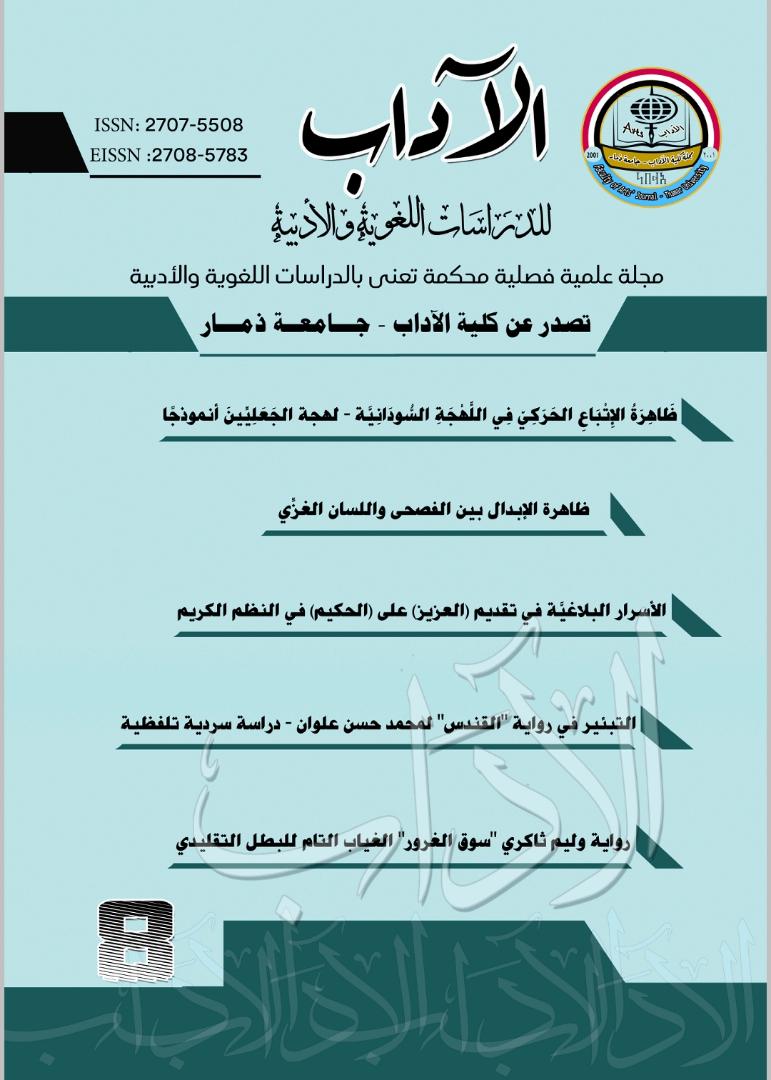The Phonetic Insertion Phenomenon in the Sudanese Dialect The Ja`ali Example
DOI:
https://doi.org/10.53286/arts.v1i8.289Keywords:
Linguistic Studies, Dialect, Sudan, Al-Ja'lieen TribeAbstract
This paper aims to address the phenomenon of insertion of similar phonemes to the phoneme before or after in the contemporary Sudanese dialect, its positions, objectives, the extent of its agreement and contradiction with the ancient Arab dialects, and the Arab dialects affected by it. The paper addresses the insertion of phonemes after initial position and before final positions with two adjacent and non-adjacent sounds, such as adding a ‘Fat-ha’ (/ʌ/ sound) to an adjacent ‘Fat-ha’ (/ʌ/ sound) in the noun case: (/fʌl/ → /fʌʌl/), (fʌleh/ → /fʌʌleh/), (/mʌfuːl/ → /mʌfʌuːl/), (/ʌfʌl/ → /ʌf’ʌl), (/mʊfʌl/ → /mʌfʌl/, and inserting a similar phoneme to two non-adjacent sounds: (/ʌbrɑːhiːm/ and /ʌsbʌ/). The paper also addresses the insertion of the short /ɪ/ after another short /ɪ/ in verbs and three-letter nouns and others, and the insertion of phonemes also appeared in two non-adjacent phonemes in the case of the Active Participle derived from three-letter accentuated verbs. The most important conclusion of this paper is that the Sudanese dialect was influenced by adding similar phonemes, popular with the Arab tribes in Hijaz area and tribes neighboring Tamim; Bani Hilal and Bani Hanifa.Downloads
Downloads
Published
How to Cite
Issue
Section
License
Copyright (c) 2021 أمل عثمان العطا محمّد

This work is licensed under a Creative Commons Attribution 4.0 International License.
Copyright and Licensing
copyright is retained by the authors. Articles are licensed under an open access Creative Commons CC BY 4.0 license, meaning that anyone may download and read the paper for free. In addition, the article may be reused and quoted provided that the original published version is cited. These conditions allow for maximum use and exposure of the work.



